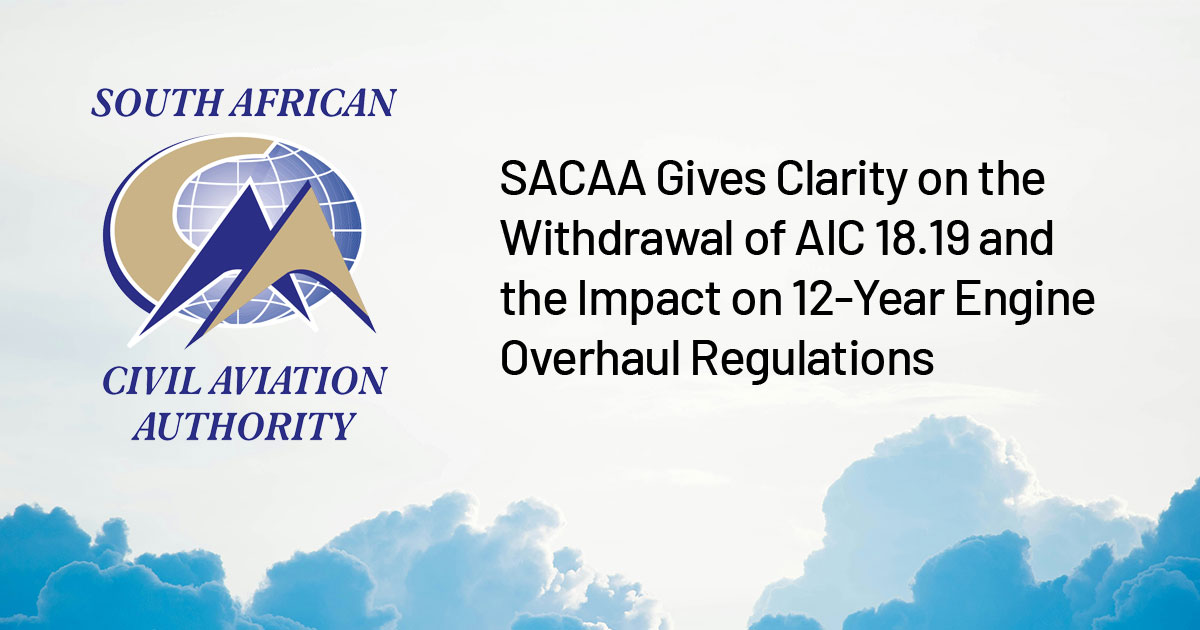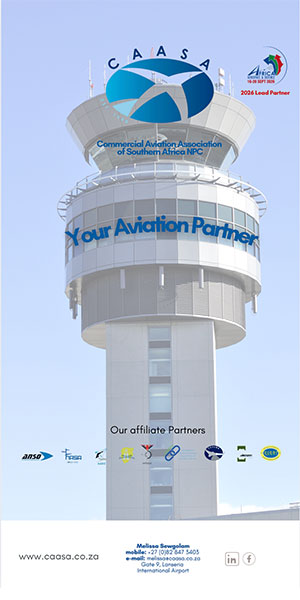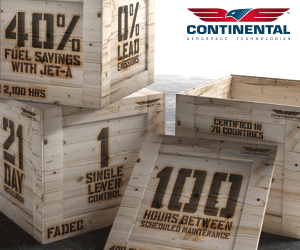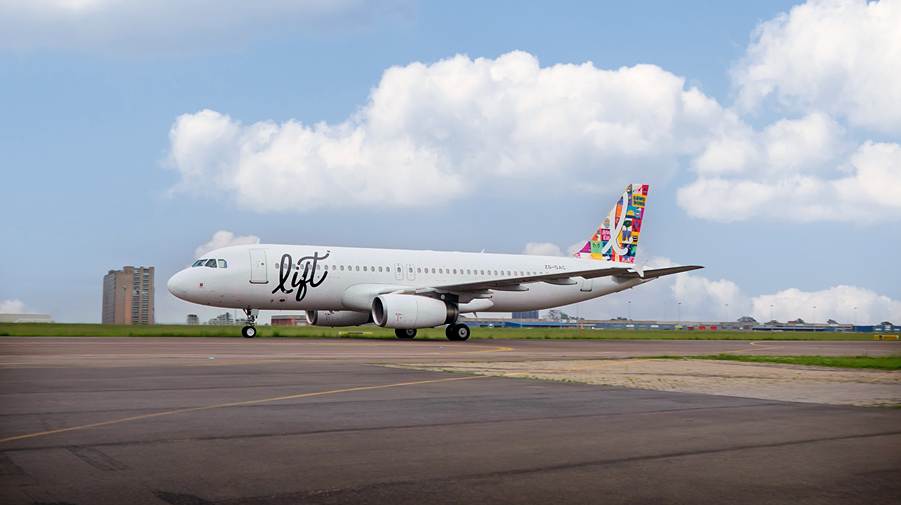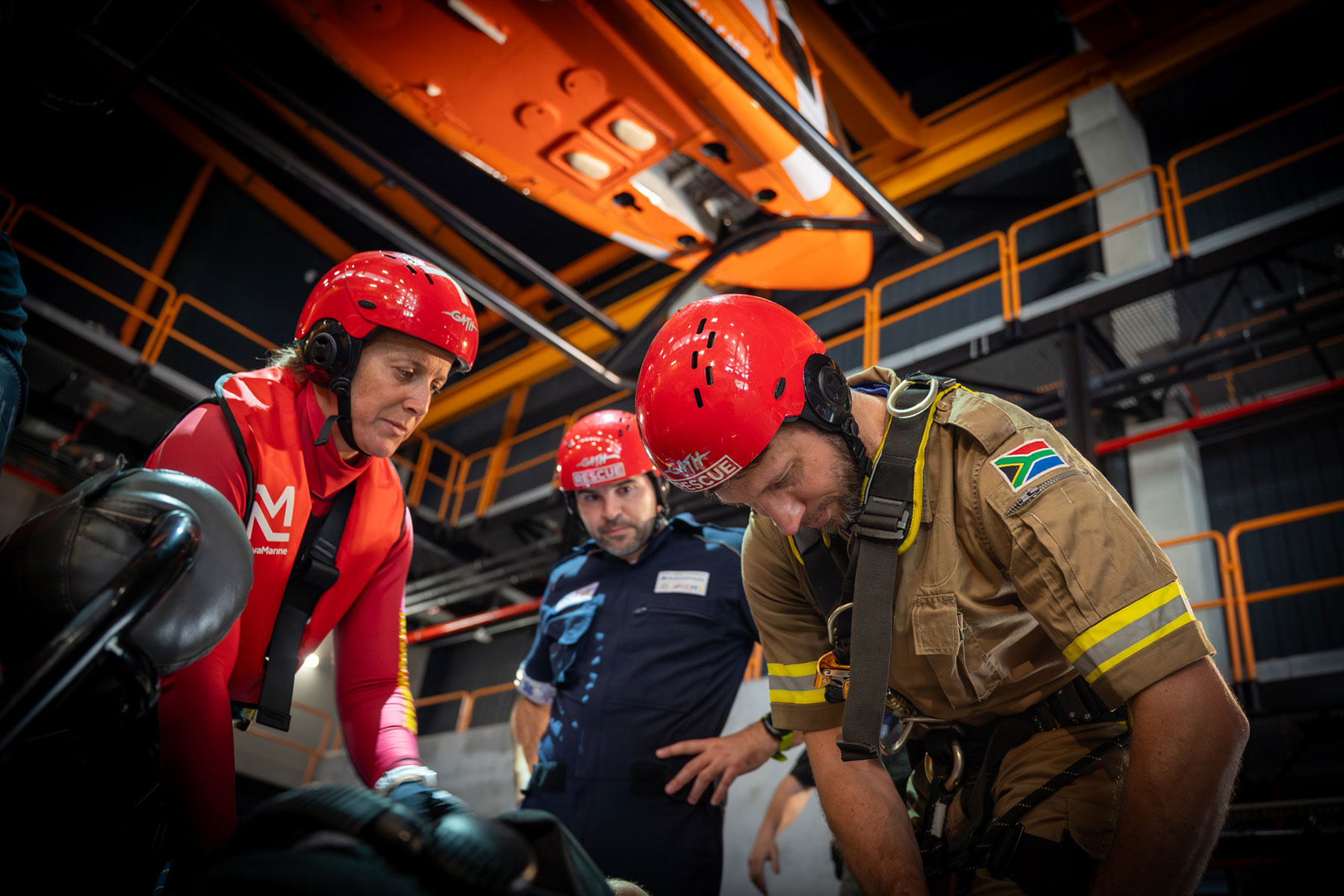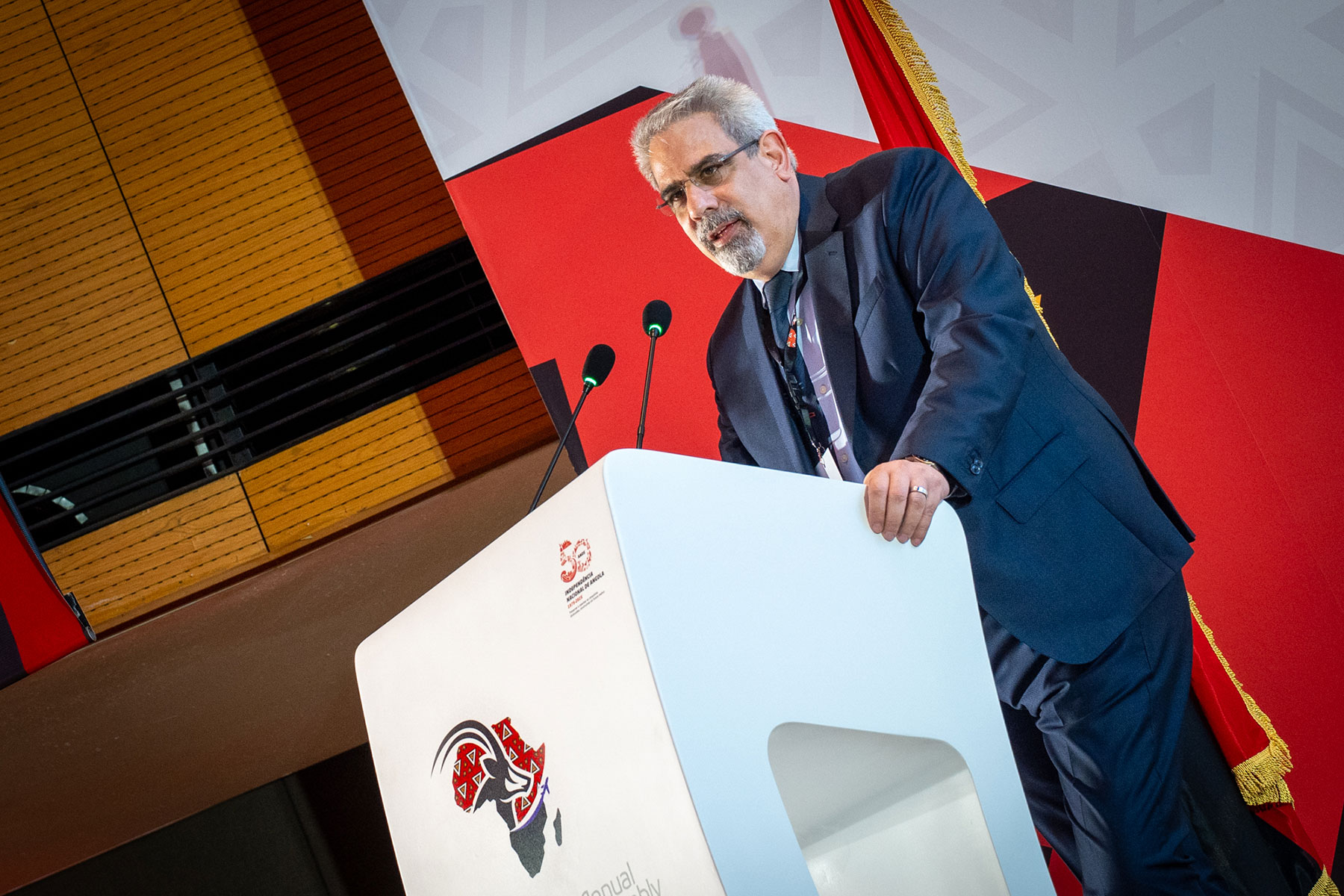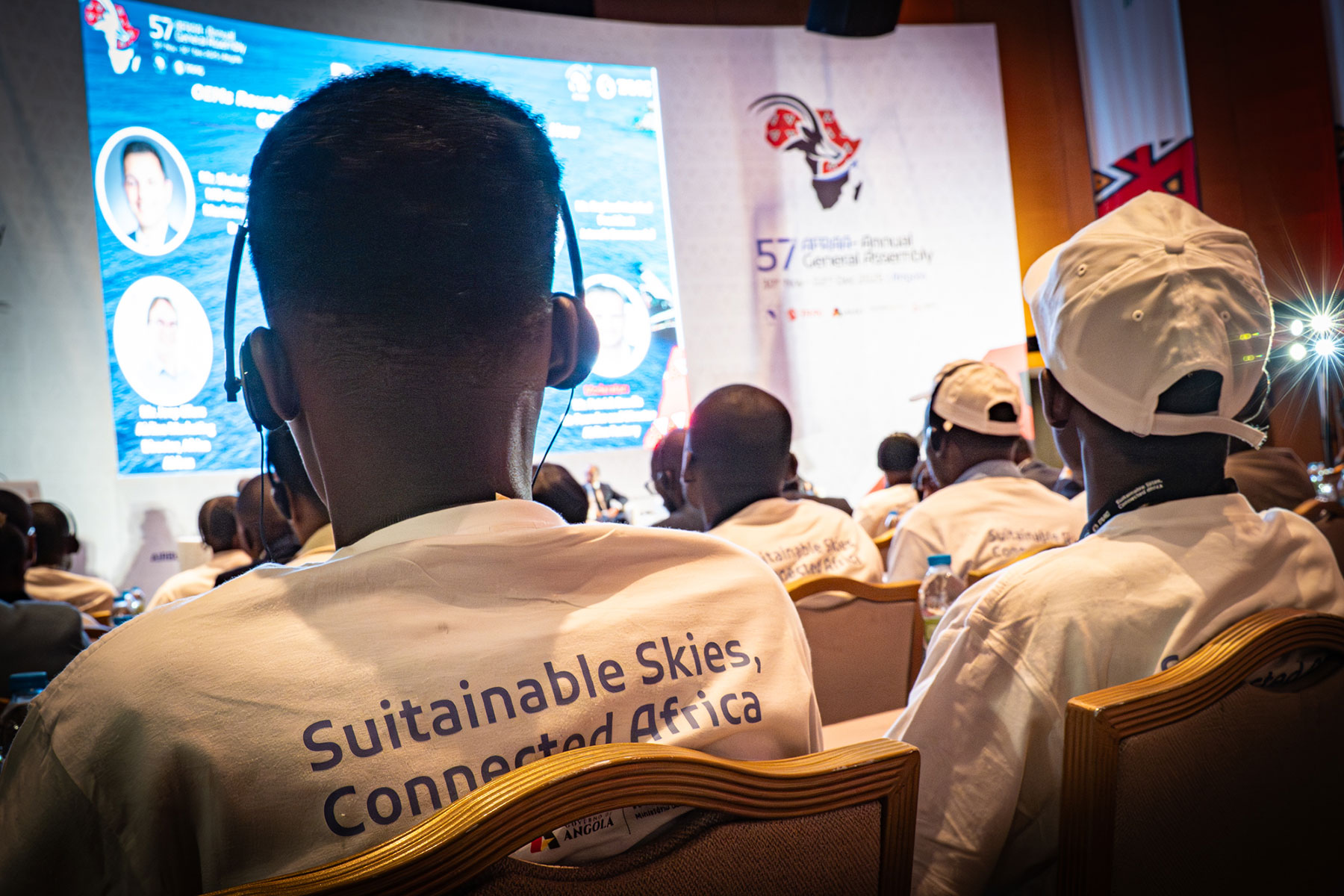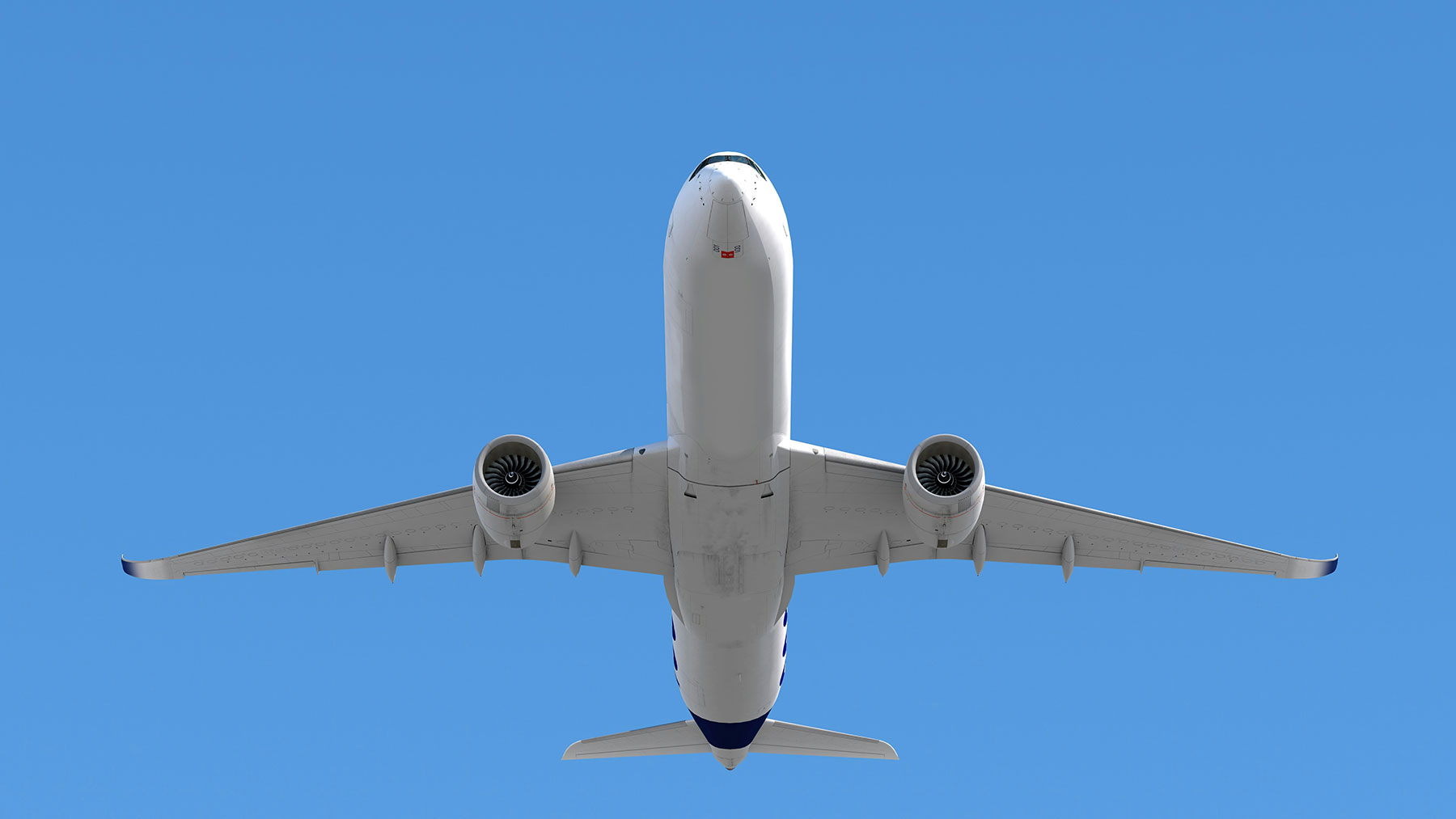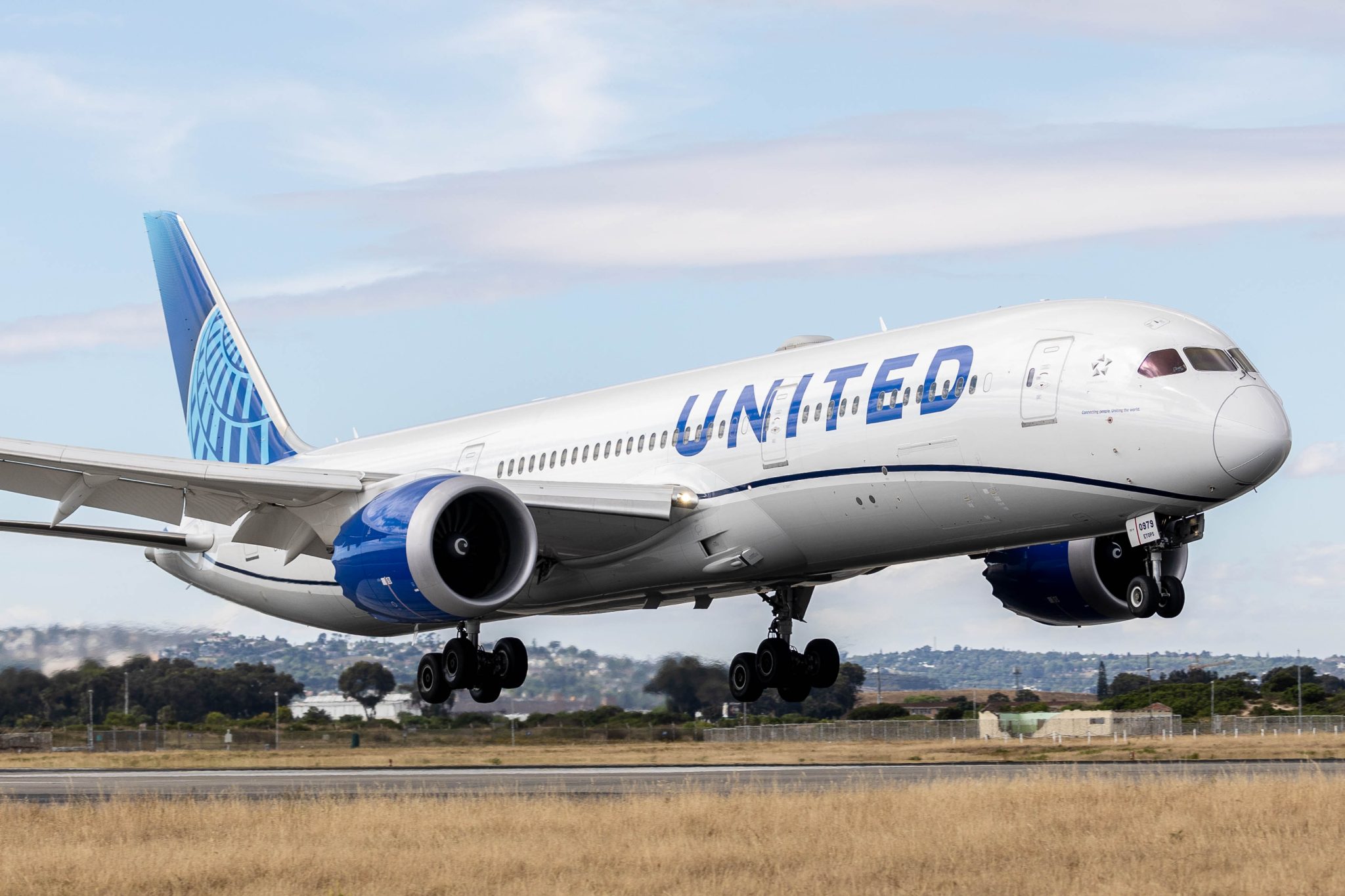Following the recent industry outcry regarding the withdrawal of Aeronautical Information Circular (AIC) 18.19 – the SACCA issued the following media statement on 14 June.
The South African Civil Aviation Authority (SACAA) would like to provide clarity on the withdrawal of Aeronautical Information Circular (AIC) 18.19 on the overhaul of aircraft engines in line with the manufacturer’s manual.
In 2023, the SACAA rolled out a project to review all AICs that were issued by the Regulator in the past, to ensure that they are adequately aligned with the existing regulatory dispensation.
As part of this process, the SACAA identified that AIC 18.19 is not aligned with the Civil Aviation Regulations 2011 (CARs). AIC 18.19 was last issued by the SACAA in 2006, exempting aircraft owners and operators from complying with the 1997 CARs on the overhauling of engines in line with the manufacturers’ manual.
This was immediately identified as a safety risk as well as a legal and liability risk by the Regulator.
Not only was the AIC used incorrectly in this case, but it was also linked to regulations that had been repealed over the years. Given these inconsistencies and irregularities, it became necessary for the Regulator to withdraw the AIC.
AICs are supplementary communication tools used by Regulators to communicate specific aviation related information to the industry. They are not meant to exempt industry from applicable regulatory provisions.
As a standard rule, the airworthiness and maintenance of aircraft is covered in sufficient detail in a manufacturer’s manual. As the manufacturer of the equipment or product, the manufacturers are expected to ensure that their products are not just supported with adequate parts but that they advise users of any safety risks that may become apparent during the use of such products on an ongoing basis.
The Regulator’s mandate is quite distinct from that of manufacturers, and it is to ensure that aircraft owners and operators maintain their aircraft in compliance with the manufacturer’s maintenance manuals. In instances where non-compliance is identified, the Regulator takes appropriate actions including enforcement action to ensure that industry adheres to applicable legal provisions.
To address the gap resulting from the withdrawal of the AIC and in order to enable the industry to prepare for full compliance with the current regulations and associated Civil Aviation Technical Standards (CATS), the Director of Civil Aviation (DCA) issued a general exemption with conditions on 1 December 2023 that were valid for 180 days.
Responding to the outcry from industry to be given additional time to comply, this exemption was extended on 29 May 2024 for another 180 days, expiring on 26 November 2024, which is the longest permissible time for an exemption from applicable regulations.
Industry members were informed that, following the expiration of the extension, aircraft owners and operators would be required to comply fully with Civil Aviation Regulation (CAR) 43.02.5 and its associated Civil Aviation Technical Standards (CATS) 43.02.5, as well as the manufacturers’ engine or product requirements.
The engines affected in this dispute with some operators and aircraft owners are Textron Lycoming and Teledyne Continental. Owners or operators of aircraft fitted with these engines must adhere to the manufacturer’s maintenance requirements and associated Service Bulletins, Service Letters and Service Information.
AICs cannot override or supersede manufacturers’ requirements as this will attract significant safety risks.
This requirement largely impacts aircraft operated in the general aviation (private flying for different purposes including light commercial, aerial work and flight training) sector and does not affect scheduled commercial airlines. The SACAA is aware that the aircraft in question are sometimes used for over border operations, and this heightens the risk as they enter the sphere of international operations.
It is important to note what the SACAA is calling for is not unique to this particular aircraft or components but is universal throughout all other aircraft and those industry members comply fully with the manufacturers manual and the SACAA regulations.
The SACAA is in the process of finalising the alignment of CATS with the current regulations. The CATS were reviewed through an existing regulated consultative structure, namely, the Civil Aviation Regulations Committee (CARCom). The CARCom is a multi-stakeholder body established in terms of the Civil Aviation Act and follows a prescribed consultative process for the development, amendment and review of regulations and technical standards.
During the review, it was found that the current provisions in the technical standards somewhat usurped the responsibilities of engine manufacturers by making the 12-year engine overhaul requirement compulsory and, also by including in detail the maintenance methods and techniques, a determination which is the responsibility of manufacturers and not regulators.
The SACAA is a Regulator, not a manufacturer and as such cannot determine mandatory maintenance intervals for aircraft parts.
The allegations that 1,400 aircraft and 300,000 jobs have been impacted by the withdrawal of this AIC remain untested. The SACAA believes this assertion is without merit and is unsupported by credible evidence. The Regulator commends all operators and aircraft owners who have complied with applicable regulations and the manufacturers 12-year engine overhaul requirement.
“The SACAA will continue to engage the industry on this matter to find a middle ground without compromising each other’s responsibilities. The Regulator has demonstrated on many accounts to be responsive to the industry’s views, however, what is also needed is for the industry to have an appreciation of the Regulator’s perspective as it balances aviation safety and industry interests,” said the SACAA’s Director of Civil Aviation, Ms Poppy Khoza.
“The door for engagement is not closed; hence we have taken steps to engage the Original Equipment Manufacturers to pronounce themselves on this matter without ambiguity as the manufacturers of these products. The SACAA will persistently work towards ensuring that aviation safety and security is not compromised. In some instances, and where necessary, decisions taken on account of safety can override commercial interests. While it is important to find a balance, it is not always possible.”
To read the first media releases issued (dated 7 June), by the AIC 18/19 Task Team under a collective comprising the Commercial Aviation Association of Southern Africa (CAASA), the Aeroclub of South Africa, Aviation Watch Action Committee, Aviation Action Group and Concerned Aircraft Owners, Pilots, Engineers and Operators. In which, it noted that “All South African fixed-wing aeroplanes and helicopters fitted with Textron-Lycoming and Teledyne Continental engines and possibly also Pratt & Whitney and Rotax engines not overhauled during the past 12 years have constructively been grounded overnight.”
